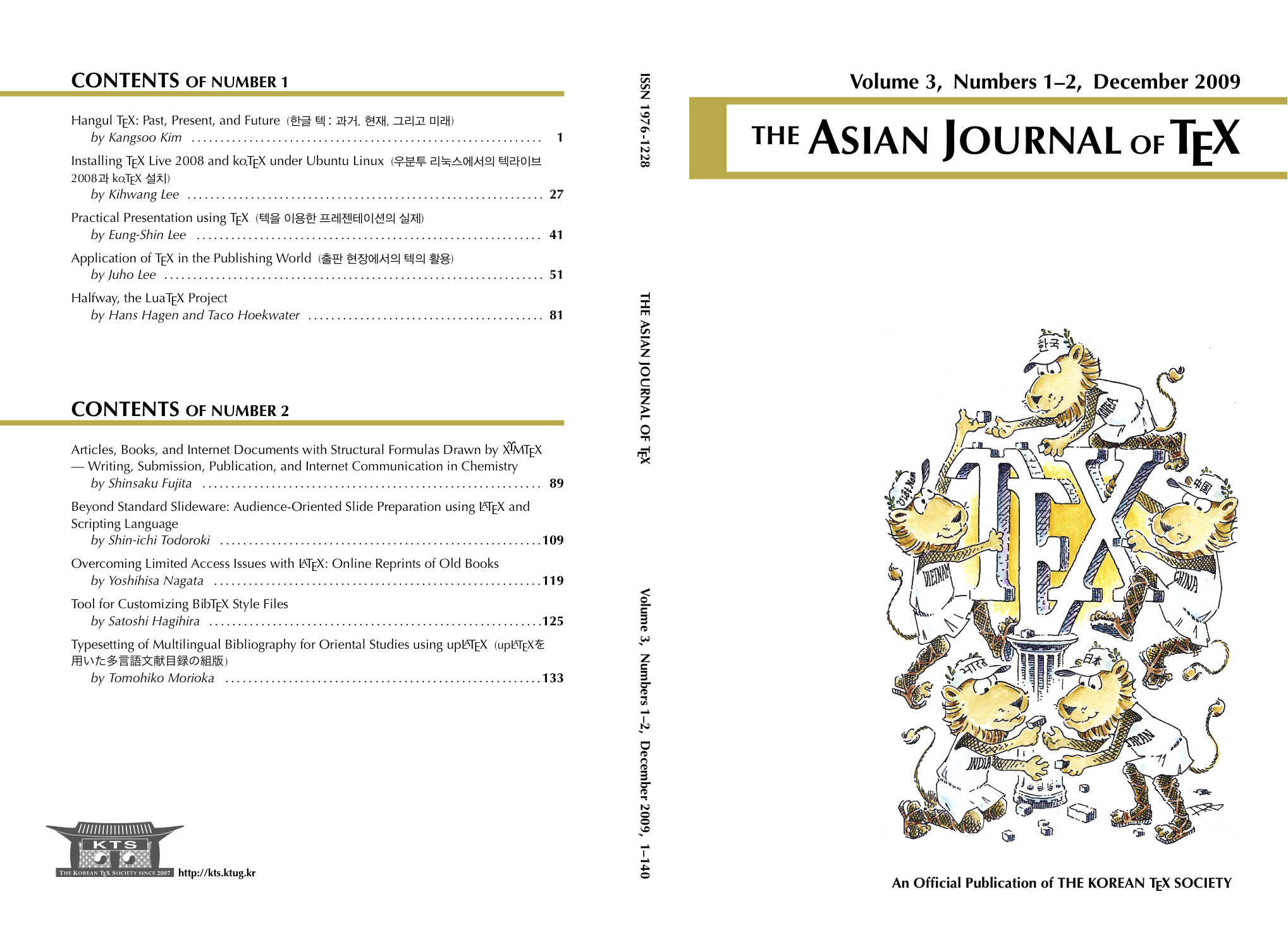Published on June 30, 2009
Hangul TeX: Past, Present, and Future (한글 텍: 과거, 현재, 그리고 미래)
by Kangsoo Kim (김강수) 1-26This article looks back upon the past and the current status of Hangul TeX system, and tries to take a view on the future of the Hangul TeX. Specifically, we will look into a set of required features of Hangul TeX system by describing the tasks that ko.TeX has faced and tackled. Our focus will be laid on the issues regarding implementing proper Hangul typography as well as basic typesetting of Hangul characters.
Installing TeX Live 2008 and ko.TeX under Ubuntu Linux (우분투 리눅스에서의 텍라이브 2008과 ko.TeX 설치)
by Kihwang Lee (이기황) 27-40This article provides practical guides for installing TeX Live 2008 and ko.TeX under Ubuntu Linux, a popular Linux distribution. We also look into issues regarding installing other TeX-related tools including Kile and LYX, and additional Truetype fonts.
Practical Presentation using TeX (텍을 이용한 프레젠테이션의 실제)
by Eung-Shin Lee (이응신) 41-50To achieve effective communication of ideas and thoughts, it is vital to choose appropriate tools and medium. This article offers some general principles for better presentations. It also introduces the beamer class, a LaTeX macro packages for creating beautiful and effective presentation materials. We will concentrate on the key features of the beamer that distinguish it from other presentation tools.
Application of TeX in the Publishing World (출판 현장에서의 텍의 활용)
by Juho Lee (이주호) 51-79In this paper, we look into the definition and the components of a book which is the final product of publishing. We also introduce the roles that TeX can play in the various stages of producing a book, and describe the strength and weakness of TeX as a typesetting system compared to other systems. The methods of implementing essential typographical elements including book size, page layout, font selection, line and character spacing settings, and paragraph justification are also shown together with practical examples.
Halfway, the LuaTeX Project
by Hans Hagen and Taco Hoekwater 81-87In this note we describe the current status of the LuaTeX project, including several topics, design principles, Lua scripting, I/O, interface, fonts, tokens, nodes, attributes, hyphenation, images, paragraph building, MetaPost, mathematics, page building, CWEB, cleanup, alignments, error handling, backend, ConTeXt MkIV, and the future.

